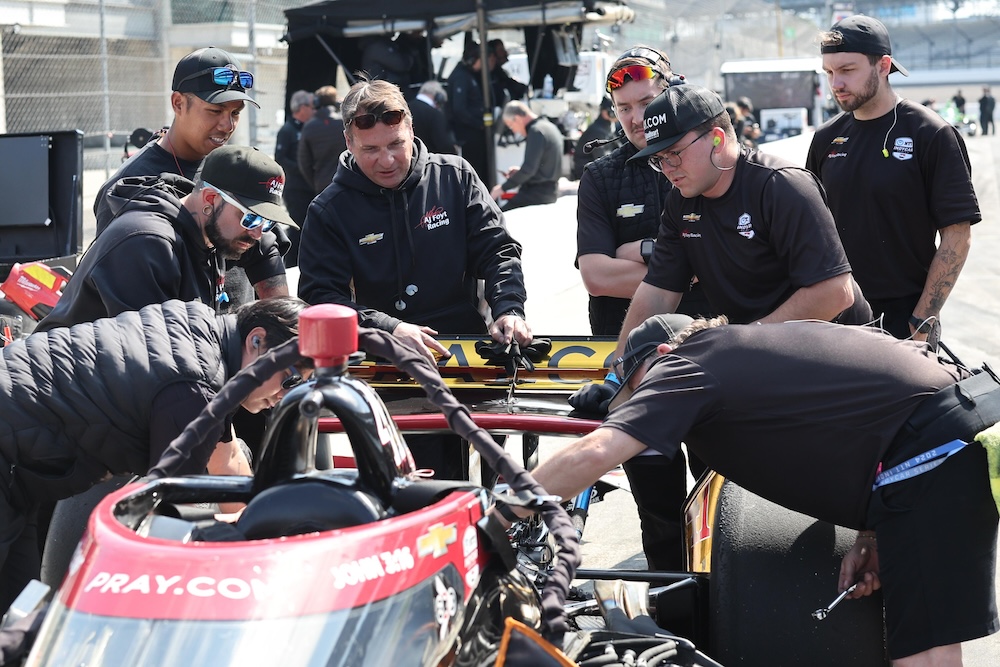Today’s NTT IndyCar Series test at Iowa Speedway will give the series a chance to learn more about its new hybrid powertrains, the newly paved 0.875-mile oval’s grip, and how both interact ahead of the series’ July 13-14 doubleheader at the track.
IndyCar structured the test to make use of two cars in the morning to run through a range of fact-finding outings spearheaded by Pato O’Ward in the No. 5 Arrow McLaren Chevy and Colton Herta in the No. 26 Andretti Global Honda. With one hour reserved for the series, the former Indy NXT teammates were set to try three different downforce settings and report back to the series on the positives and negatives of each configuration.
With 27 cars scheduled to test, the series will also gather widespread info on how the use of its new energy recovery system (ERS) on its quickest circuit — in terms of lap times, which have been in the high 17-second range in qualifying — are utilized by its teams. Due to the constant turning and passing, drivers will be far busier than at any other track, which could limit their ability to manage traffic, the car’s handling, and active energy harvesting and deployment.
ERS usage habits will be captured by the series, which has given drivers a maximum per-lap energy deployment of 105 kilojoules of power per lap on top of the 700-plus hp generated by the 2.2-liter twin-turbo V6 internal combustion engines made by Chevy and Honda, and 30 newton meters of torque contributed by the motor generator unit.
[lawrence-auto-related count=3 category=1408]
IndyCar has also informed its teams of the need to weigh each car on the series’ technical inspection scales, minus fuel, driver, driver equivalency ballast, and drink bottle, to establish a minimum weight for the 27 hybrid Dallara DW12s and derive an average that will be used as the new hybrid-spec minimum starting at the July 5-7 Mid-Ohio race where IndyCar’s new hybrid era will launch.
Teams have been told to anticipate a final hybrid minimum weight that is between 100-105 pounds above the non-hybrid road/street course specification minimum of 1,680 lbs used through last weekend’s race at Laguna Seca. The new minimum weight will also change the pre-hybrid speedway minimum of 1,635 lbs and the short oval minimum of 1,670 lbs.
